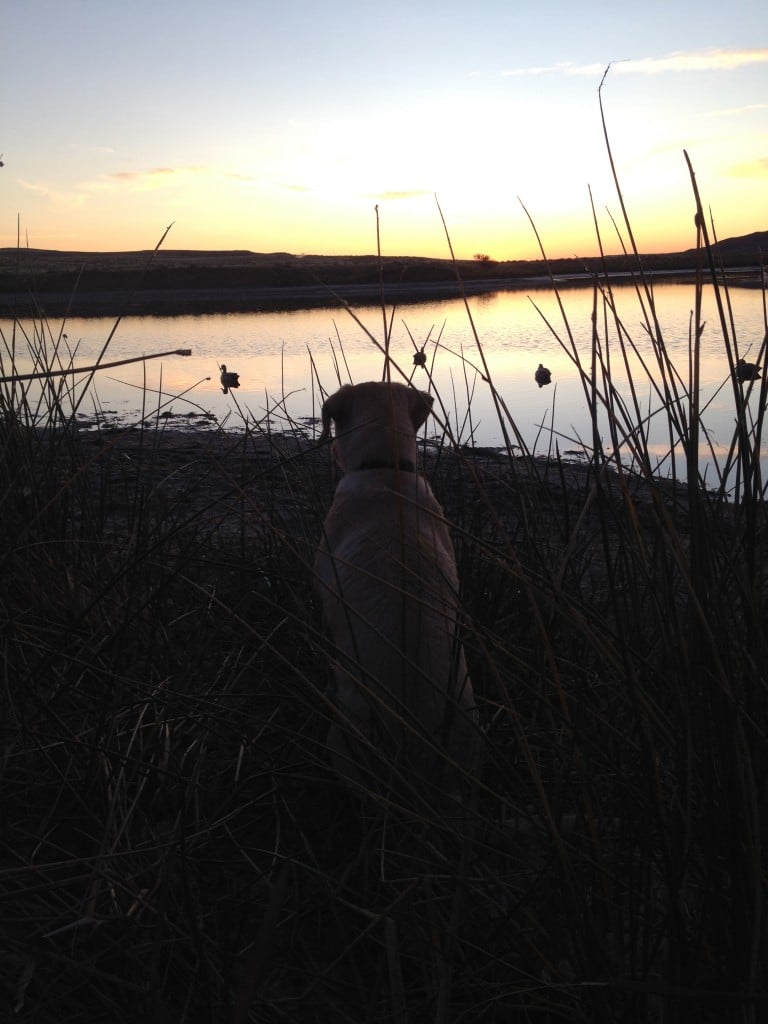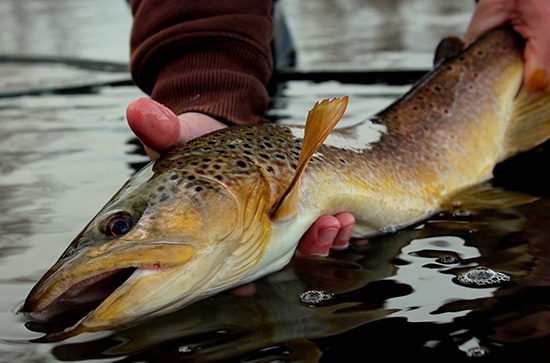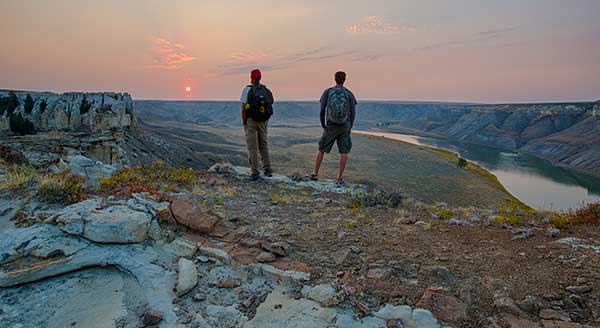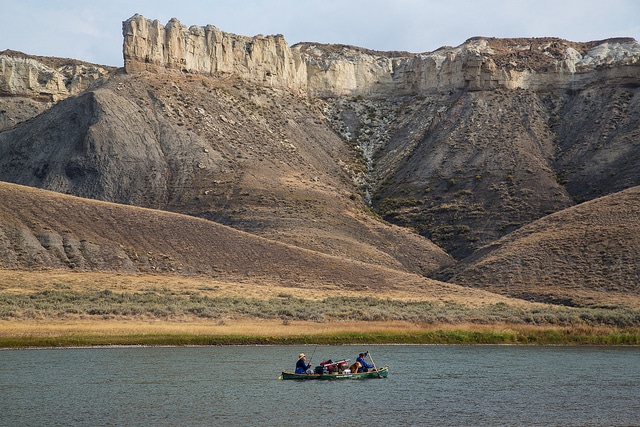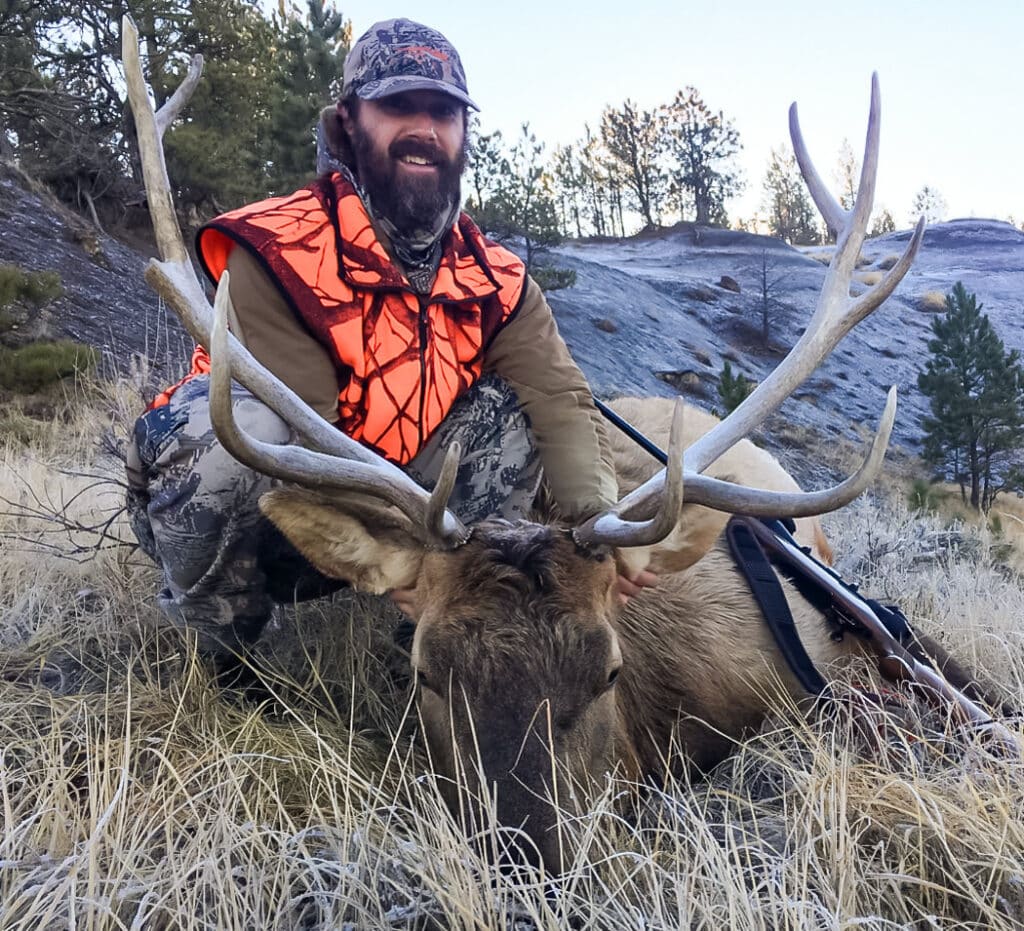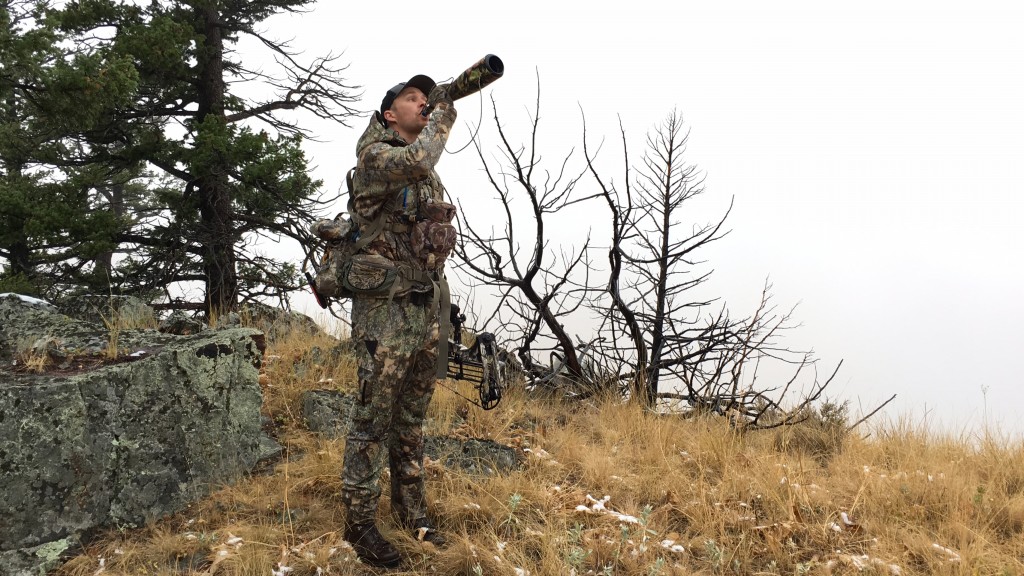
Marcus is the Central Montana Field Representative for MWF and a passionate big game hunter. For Marcus, making sure his gear is ready prior to the beginning of each hunt is nothing short of ritualistic. Finding the balance between functionality and weight is critical to a successful hunt. One must avoid carrying unneeded gear, but be prepared. Thus, Marcus carefully selects his gear to fit the hunt. Here is his suggested gear list for big game hunting.
Clothes
Marcus’s boots of choice are the Danner Powderhorn. They are a solid, all-around boot that performs equally well chasing elk through the mountains or hiking to a tree stand along a river bottom. For camouflage, he wears King’s Camo. It’s a high quality, low-cost camo that can be found through many different dealers across Montana. Whether one believes that camouflage is needed or not, having comfortable clothes while hunting is essential. The one rule for Marcus is to avoid cotton due to its tendency to absorb water and cause chafing.
Pack
The ideal pack is one that can be used as a daypack or as a multi-day pack. Marcus uses the Sky 5900 from Stone Glacier, an expedition pack that can convert down into a daypack. If you’re looking for a less expensive option, check out ALPS Outdoorz or the King’s Camo Mountain Top 2200. Whatever pack you choose, make sure that it can handle the weight of a pack out.
Day Hunt
For Marcus’s day hunts he carries these basics:
- Hunting Licences
- Binoculars – Vortex Diamondback 10×42
- Rangefinder – Vortex Ranger 1000
- Harvest Kit – Alaska Game Bags, electrical tape, fluorescent flagging tap, and skinning knife
- Bear Spray – UDAP
- 550 paracord
- Wind Checker – Dead Down Wind Wind Detector
- Facepaint – Nature’s Paint
- Headlamp – Black Diamond Ion
- First Aid – Quickclot and Ultralight/Watertight Medical Kit .9
- Game calls – Rocky Mountain Hunting Calls
Multi-Day Hunt
For a multi-day hunt, Marcus’s list is a little more involved. The attached Excel sheet is a complete list of everything Marcus uses for a seven-day backpack trip. This is a good starting point and checklist for you to use as you plan your next adventure. Download the file and adjust it to fit your needs. If you have any questions about gear contact Marcus at mstrange@mtwf.org. Good luck out there and shoot straight!
Click the link below to see Marcus’s full list.

